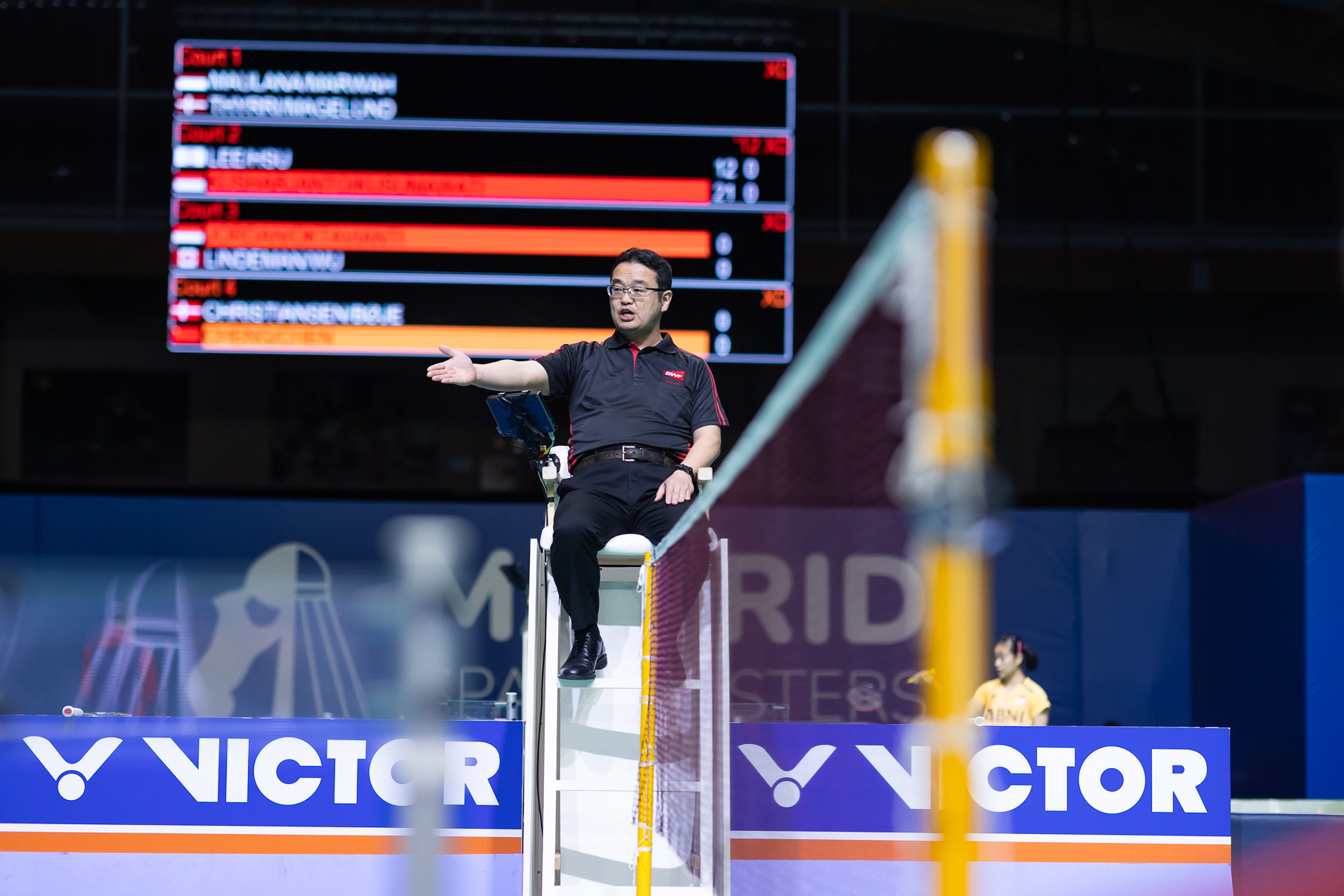The march on court
Protocol is very important at top-level international events. But why is the order in which the players go on court so important, or the fact that everyone must follow an orderly line behind the umpire?
Well, a tournament is not only a sport, but also a show. A show that is broadcasted all over the world. The Spanish Federation’s Youtube channel has 20,700 followers, the World Federation has more than three million. That means that the Madrid Spain Masters will be available every day of the event to more than three million people around the world. Carolina Marin’s final against Akane Yamaguchi at the last All England has more than 161,000 views. A crazy number for a minority sport? in this country.
In Spain we are not used to this level of views, however, in Asian countries, badminton is one of the most important sports. Thanks to the BWF’s whatsapp channel and its social networks, we can find out on which platforms and media each tournament will be broadcasted. In China, for example, the Swiss Open is broadcasted on thirteen channels.
With such an extensive coverage, it is not surprising that the organisers and the Badminton World Federation itself take great care over the presentation of the event. Everything must be order and harmoniously set. It must follow a fluid rhythm, without rush but without a pause. For this to be possible, a series of agents ensure that the protocol is followed.
First, from the match control station, located at the table with the referees, the corresponding umpire and service judge are assigned to the match. In this task, whenever possible, the principle of partiality is kept, avoiding as far as possible that an umpire and a player share the same nationality in a match.
This scoresheet is given to the umpire well in advance. Why is this done? Because now comes a very important part for the smooth running of the show. The match officials go to the meeting point area, where the marshal will call the players. In the meantime, the umpire will check that his team of line judges are ready and will give them some instructions if necessary.
Once the athletes have arrived at the meeting point, it is time to check their clothing. For this, the umpires must know the BWF clothing regulations. But why is it so important? What difference does it make what colour, contrast of the lettering or the size of the lettering? This is important for those who watch the broadcast on TV or online. If we can’t see the player’s name, do we know how to distinguish him on the screen? If they are both wearing the same clothes and the same colour, are we playing who is who? In big events it is important that everything looks good.
Once the clothing has been checked, the umpire orders the players as they are on the scoresheet. This is because when the match control announces the match, the players come out in this same order. This way they can greet the stands in an orderly fashion and, from home, the spectators will be able to see clearly who each player is. It is true that in the semi-finals and finals the players come out separately, but in the same order as in the main draw.

When the protagonists of the match arrive on court, everyone greets each other and, while the service judge takes his place, the umpire makes the draw that will determine how the match starts. Another important moment is the introduction of the match, with his right arm outstretched, the umpire begins “Ladies and gentlemen, on my right…and on my left… …to serve, love all… play” The vocabulary is also important. It standardises the orders to the players and makes them easier to understand for those who do not know English.
The off-court march is also organised, although in this case, the order of the score sheet is no longer taken into account. The players follow the umpire and leave the competition area towards the mixed zone, where, if the press requires it, they must answer questions.
All this protocol aims to favour the spectacle but also to standardise processes and simplify orders for the players. Everyone has internalised what they should do and when they should do it.
If you want to see for yourself how this march on is followed and learn more curiosities, you can follow the Madrid Spain Masters by Iberdrola on the usual platforms. If you want to see it live, don’t hesitate to join us at the Centro Deportivo Municipal El Gallur. Admission is free from 26th to 29th March. To access the semi-finals and finals, click here to get your tickets.












